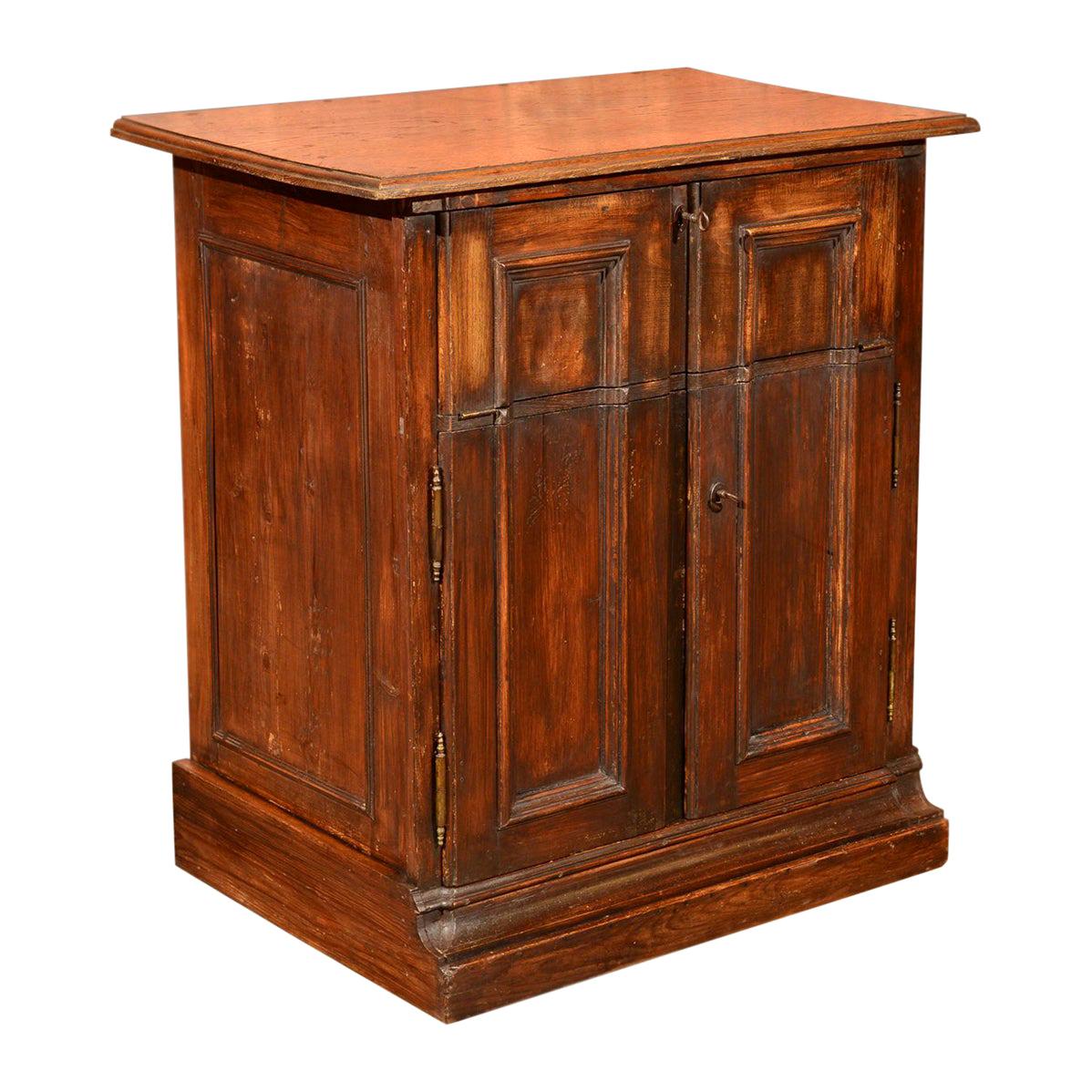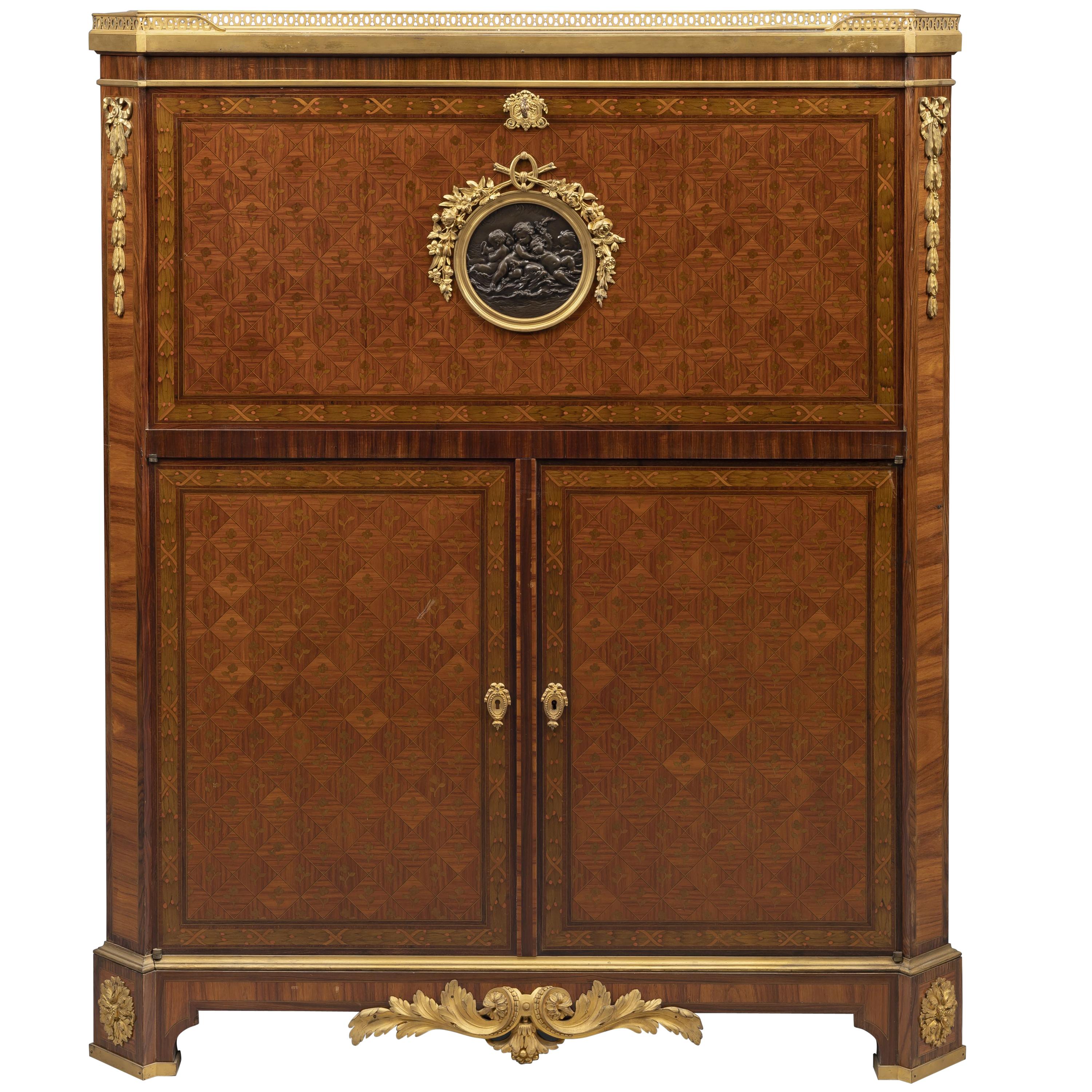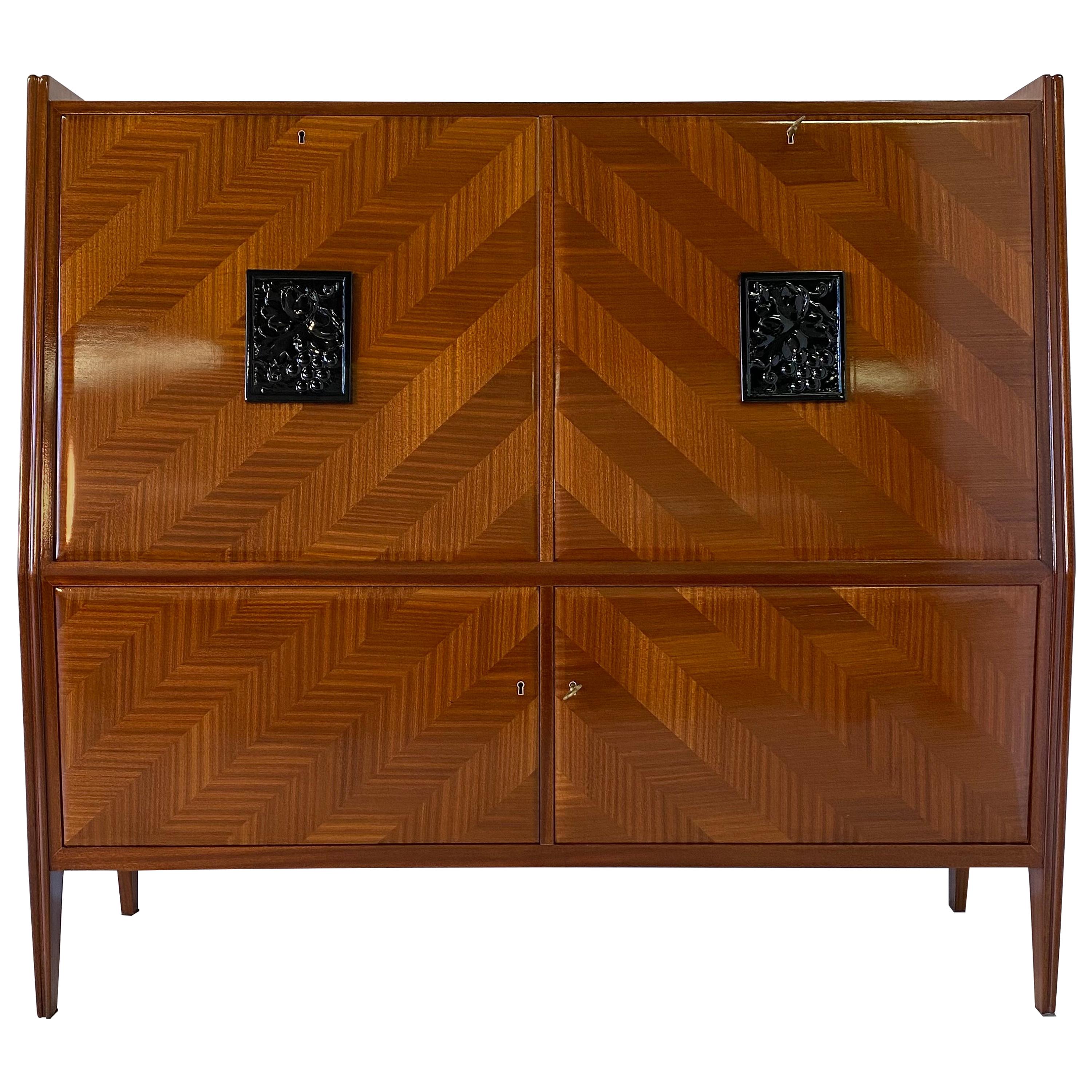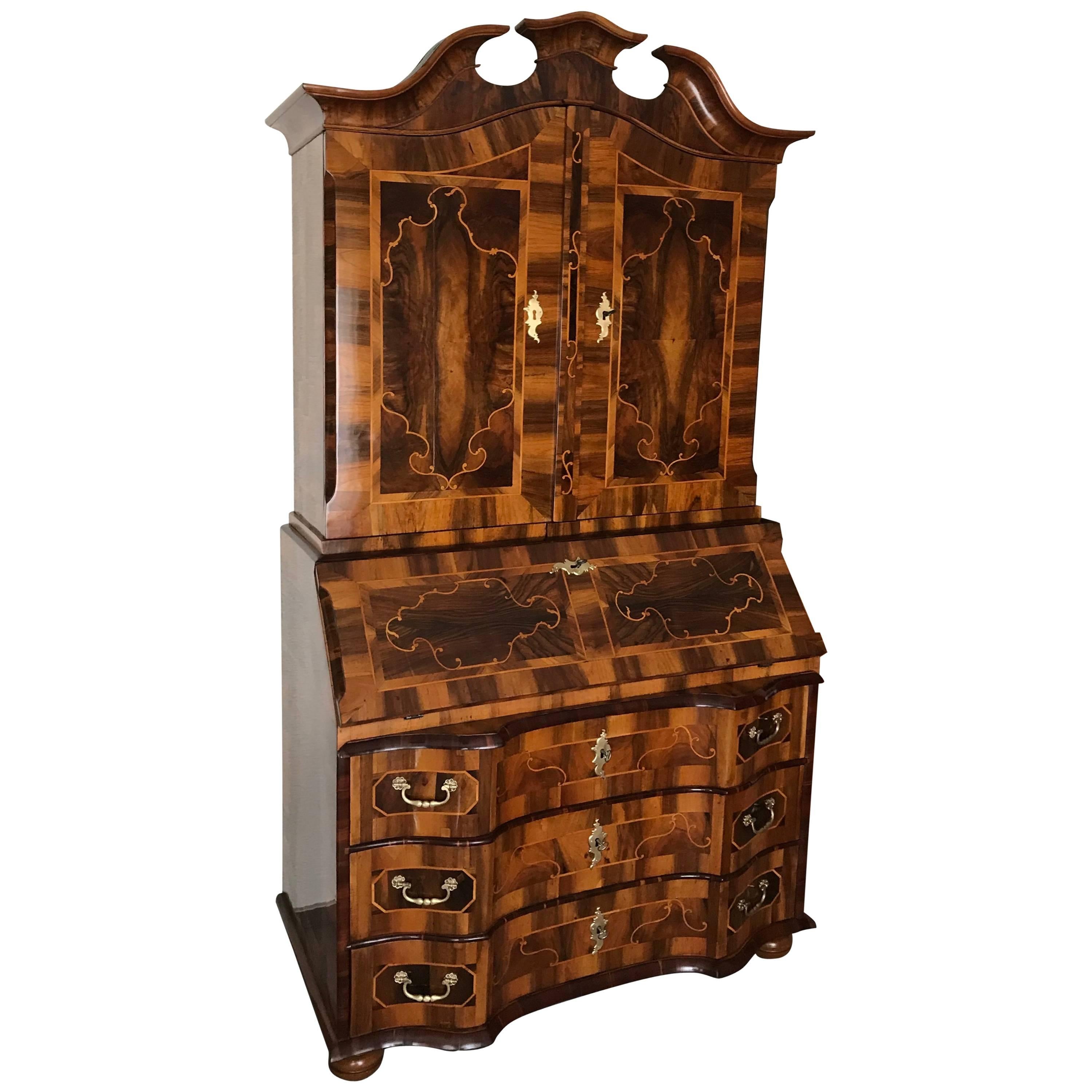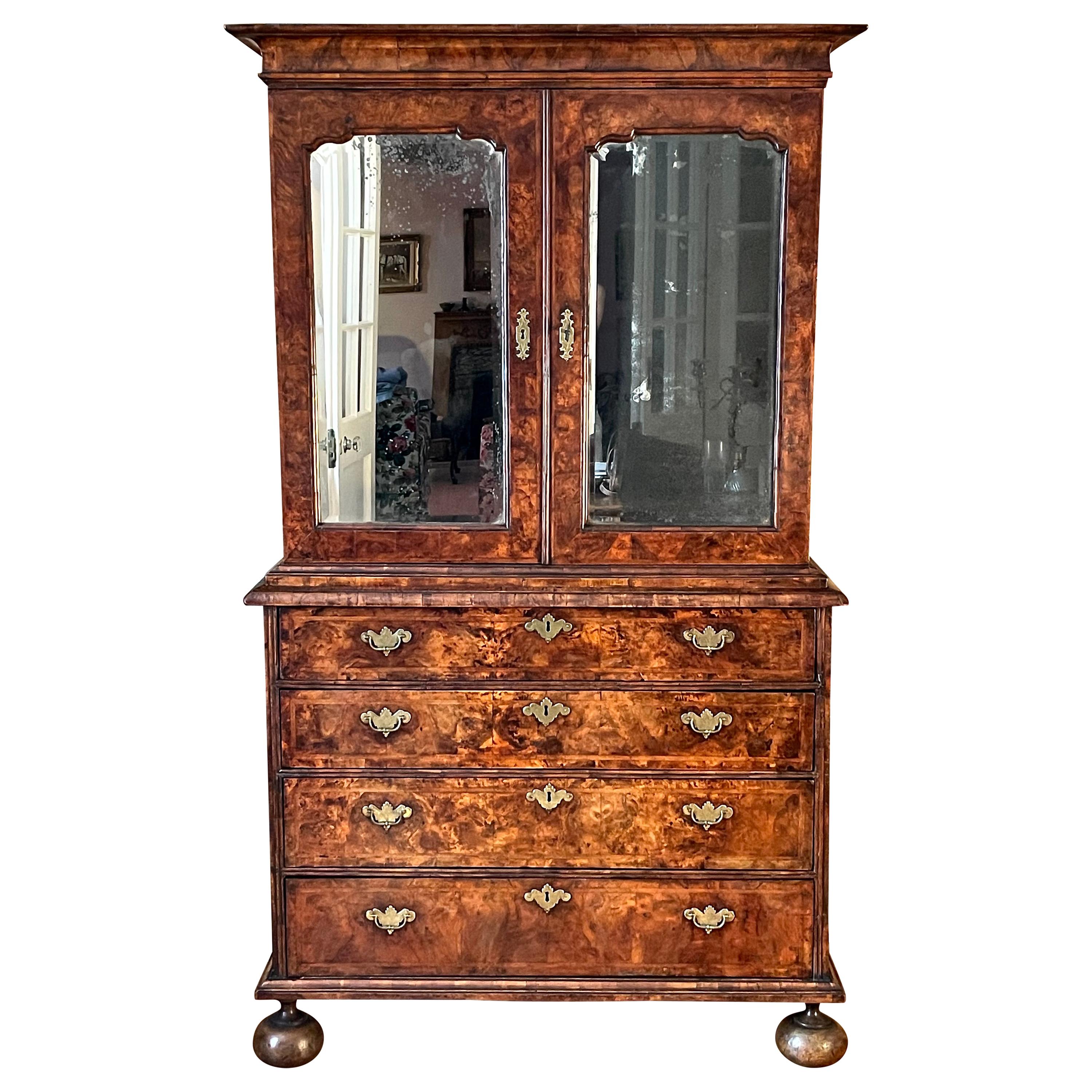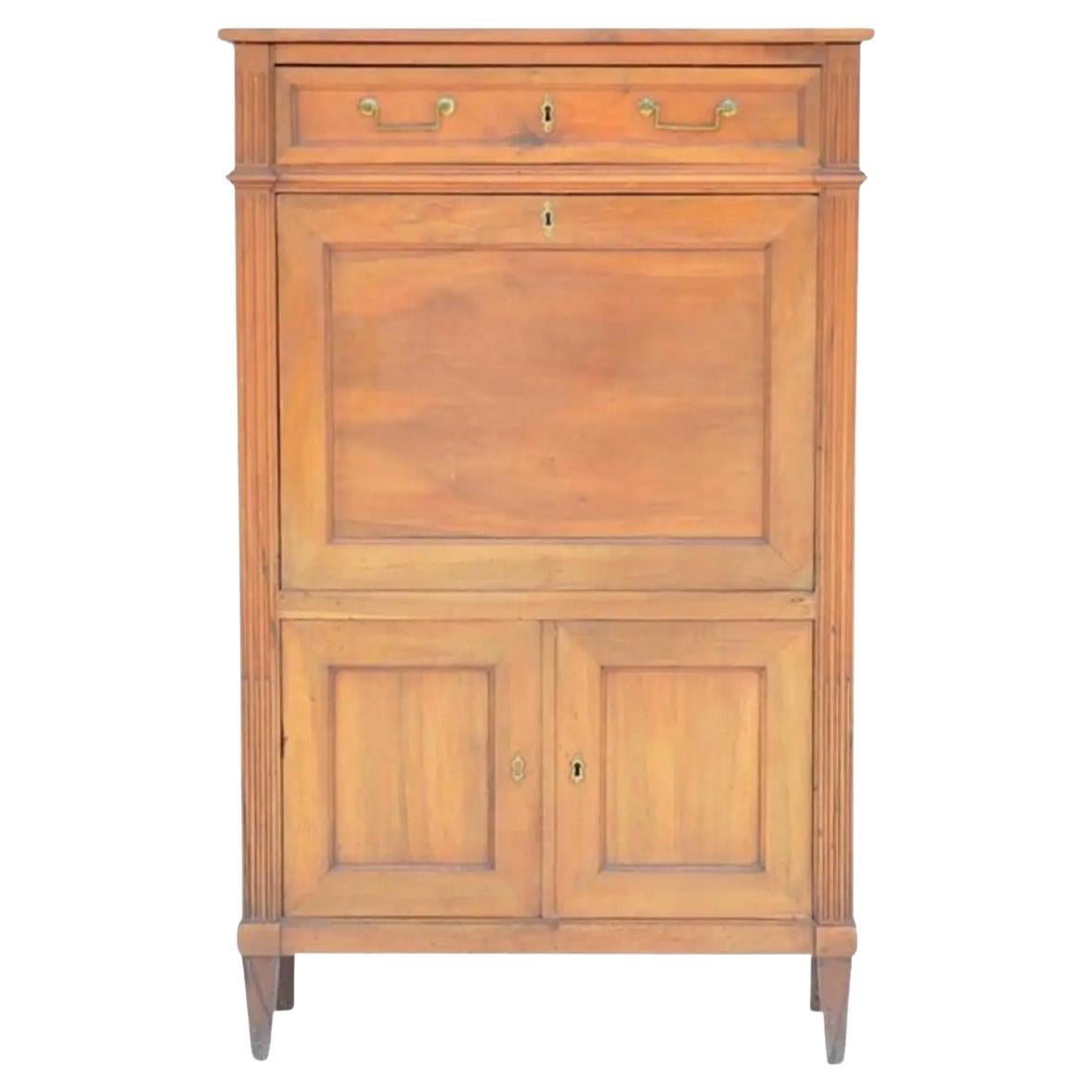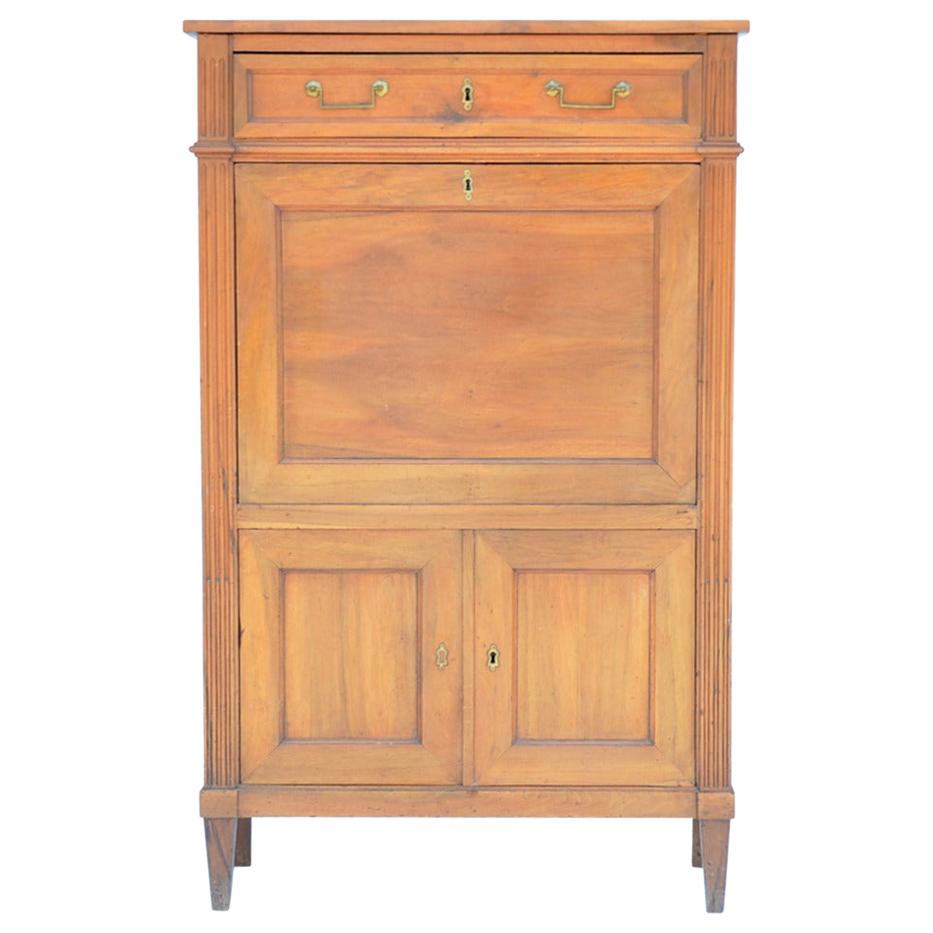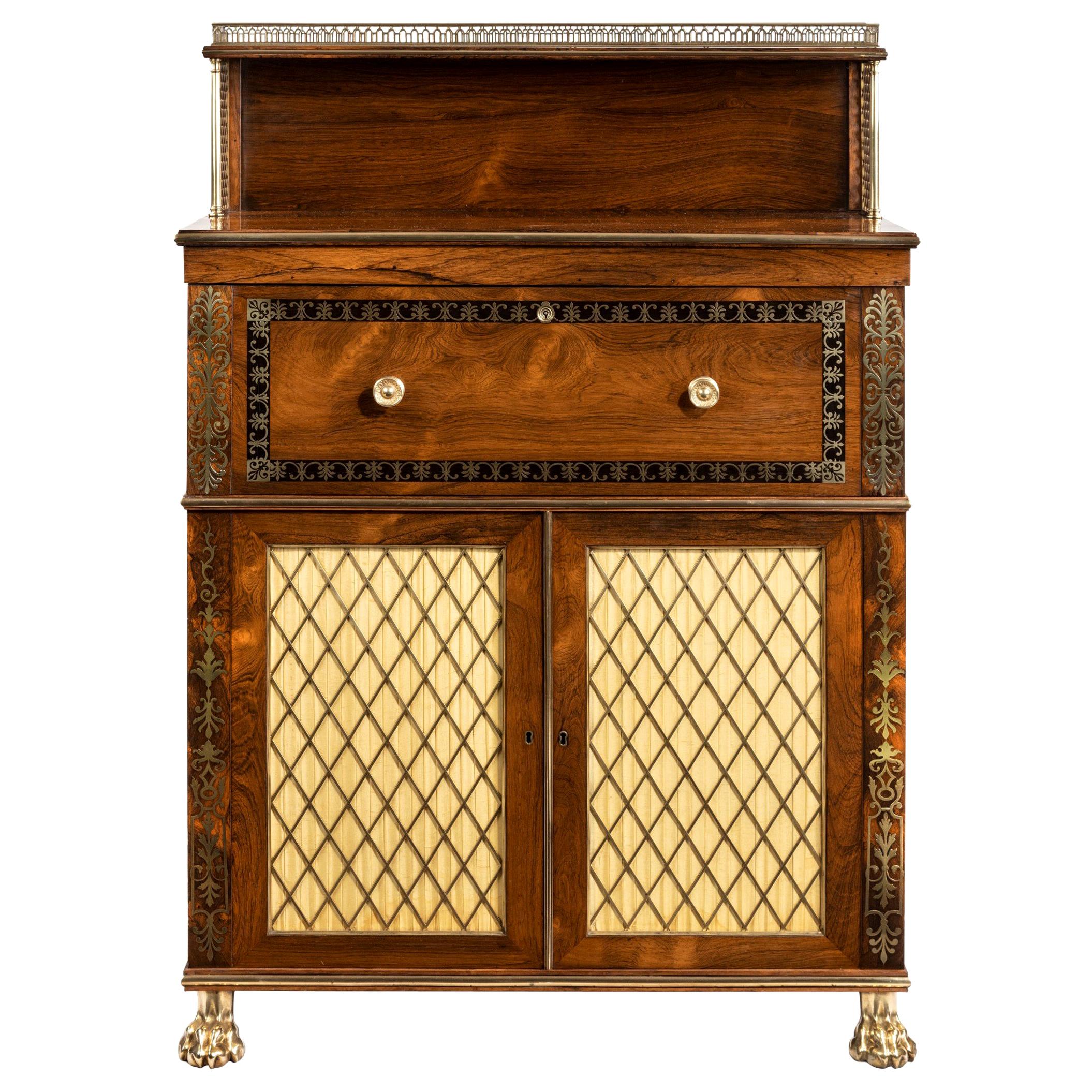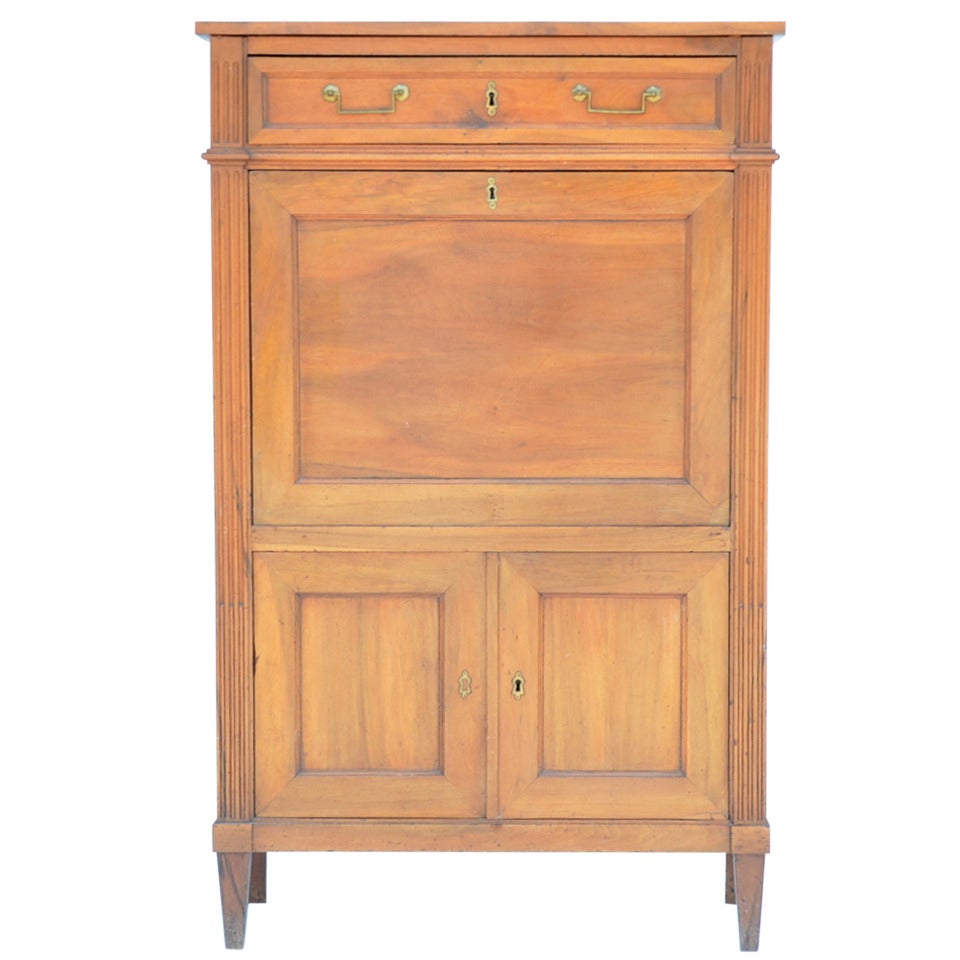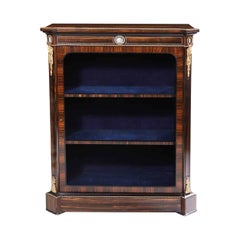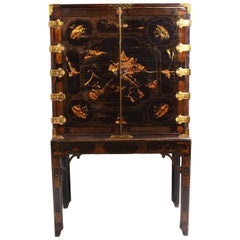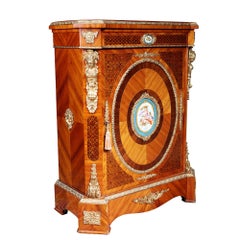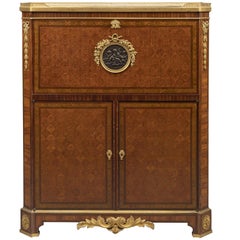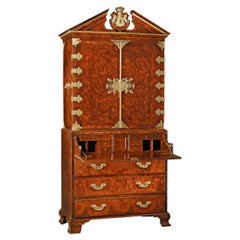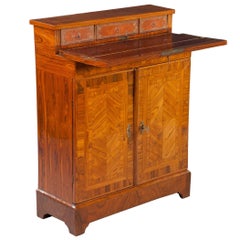
Parquetry Kingwood Secretaire Cabinet Cupboard - shallow narrow depth
View Similar Items
Want more images or videos?
Request additional images or videos from the seller
1 of 5
Parquetry Kingwood Secretaire Cabinet Cupboard - shallow narrow depth
About the Item
- Dimensions:Height: 33 in (83.82 cm)Width: 25.5 in (64.77 cm)Depth: 10.5 in (26.67 cm)
- Style:Louis XIV (In the Style Of)
- Materials and Techniques:
- Place of Origin:
- Period:
- Date of Manufacture:1850
- Condition:
- Seller Location:London, GB
- Reference Number:1stDibs: LU120425635103
About the Seller
4.9
Vetted Seller
These experienced sellers undergo a comprehensive evaluation by our team of in-house experts.
Established in 2012
1stDibs seller since 2015
115 sales on 1stDibs
Typical response time: 1 hour
More From This SellerView All
- Late 19th Century Calamander Wood Glazed CabinetLocated in London, by appointment onlyA fine late 19th century calamander wood vitrine cabinet, the top, and front veneered in calamander wood and the sides ebonised, the front and corners ...Category
Antique 19th Century English Victorian Cabinets
MaterialsBronze
- George III Black Japanned Lacquer Cabinet on StandLocated in London, by appointment onlyA George III chinoiserie cabinet on stand made using panels of 17th century Japanese lacquer and formed in the traditional manner. Standing on its original...Category
Antique 1780s English George III Cabinets
MaterialsLeather, Lacquer
$31,135 Sale Price20% Off - Late 19th Century Napoleon III Marquetry Side CabinetLocated in London, by appointment onlyA fine 19th century Napoleon III side cabinet with inlaid marquetry panels, book matched sides with gilt bronze mounts of classical figures and foliage. The top drawer and central pa...Category
Antique 1870s French Cabinets
- George Bullock Breakfront Rosewood and Brass Inlaid Side CabinetBy George BullockLocated in London, by appointment onlyA fine early 19th-century Grecian revival side cabinet in the manner of George Bullock, two glazed central doors flanked by cupboards with inlaid marquetry panels of foliate floral d...Category
Antique Early 19th Century British Regency Bookcases
MaterialsRosewood
- Late 19th Century Napoleon III French Vitrine CabinetLocated in London, by appointment onlyA fine late 19th century Napoleon III glazed cabinet on chest, the shaped grey marble top above a curved frieze and mounted with fine gilt bronze mounts. The vitrine with a full widt...Category
Antique 19th Century French Neoclassical Cabinets
MaterialsMarble, Bronze
- Pair of Mahogany Bedside Cabinets in the Manner of GillowsBy Gillows of Lancaster & LondonLocated in London, by appointment onlyA fine pair of mahogany bedside cabinets in the manner of Gillows with typical reeded tapering legs supporting bodies with a single door and veneered with flame mahogany. England, ...Category
Antique Late 19th Century European George III Commodes and Chests of Dra...
MaterialsMahogany
You May Also Like
- Antique Specimen Cabinet, French Oak Cupboard, Secretaire, Desk, circa 1850Located in Hele, Devon, GBThis is an antique specimen cabinet, a French, oak cupboard offering a secretaire desk dating to the late 19th century, circa 1850. In a de...Category
Antique Mid-19th Century French French Provincial Cabinets
MaterialsOak
- Louis XVI Style Parquetry Secrétaire, circa 1890Located in Brighton, West SussexA Louis XVI style gilt bronze mounted parquetry and marquetry fall-front Secrétaire with a marble top. Stamped to the carcass ‘10298’. This elegantly shaped Secrétaire is deco...Category
Antique 19th Century French Louis XVI Secretaires
MaterialsOrmolu, Bronze
- King George I Ambassadorial Secrétaire-CabinetLocated in New Orleans, LAThis highly important secrétaire-cabinet was crafted for and specially ordered by King George I for the British Ambassador to Russia. From its craftsmanship and materials to its exceptional artistry, it is a work of royal and historic significance that exudes power in each and every detail. The broken pediment at its apex features the simplified royal coat of arms bearing the king’s crown, while the interior is adorned by portraits of the British Royal Family. Placed within the ambassador’s St. Petersburg home, this entirely unique piece of furniture would have been a potent reminder of England's grandeur and political importance. Relations between England and Russia during this period were at an all-time high. Peter the Great had traveled to England in 1698 as part of his widely known “Grand Embassy” tour, wherein he attempted to gain foreign support against the Ottoman Empire. He spent a period of nearly four months there, meeting with King William III and his court on numerous occasions. Noted academic Arthur MacGregor wrote concerning the impact of the trip, “For two decades following Peter's visit, British influence in Russia reached a peak. It manifested itself in social custom, in craft practice and in ships and naval organization... it reached a significant sector of the population before relations cooled once again and the two nations pulled back from this era of unprecedented cordiality.” First and foremost, however, it is a reminder of British might and influence. By the reign of King George I, England had come into its own as a world power. Unique in its design, this cabinet is a reflection of the country’s might. It is crafted from the highest-quality solid walnut and burr walnut adorned by gilded lock plates and engraved hinges. The presence of ormolu at its apex and lining the doors was a rarity for this period, and its addition makes manifest the importance of the design. The outer doors open to reveal multiple interiors, including fifteen separate drawers around a central cupboard; the cupboard doors each bear mezzotint portraits of George I and his father, Ernest Augustus, Elector of Hanover. An etching after the portrait of George I dating to circa 1716 is in London’s Royal Academy. A second, inner pair of doors are adorned by mezzotints of the Prince and Princess of Wales (later Queen Caroline and George II), which are both after portraits by Sir Godfrey Kneller dated 1716 in the Royal Collection. A final portrait is revealed on the very interior of the cabinet, where a mezzotint of Frederick, Anne, Amelia and Caroline, children of the Prince of Wales, resides. An etching (circa 1715-1720) after this portrait can be found in the National Portrait Gallery (London). Apart from its abundance of royal portraiture, the cabinet features stunning painted decoration, including floral designs as well as clouds, birds and trees in a bucolic motif reminiscent of Eden. Its lower portion is a study in both form and function, featuring a fitted secrétaire-drawer above three additional drawers for storage. The cabinet appears in The Shorter Dictionary of English Furniture by R. Edwards from 1964, a text that is regarded as the bible of British furniture design. Edwards describes it as a “writing cabinet...given by George I to the British Ambassador at the Russian court.” The cabinet was likely made for the 18th-century German diplomat and writer Friedrich Christian Weber, who represented English interests at the Russian court from 1714 until 1719. Although Weber’s tenure as ambassador was relatively short, while in St. Petersburg, he authored his account entitled Das veraenderte Russland (The Present State of Russia), which was published in three volumes in 1721, 1739 and 1740. It may, however, also have been made for George Douglas, 2nd Earl of Dumbarton, who served as ambassador alongside Weber in 1716. Diplomatic relations ceased between the two countries in 1721. In 1928, the cabinet appeared for sale at the International Exhibition of Antiques & Works of Art in Olympia. It had previously been in the collection of the Woltner family of Bordeaux, the celebrated vintners who owned the estate Château Laville Haut-Brion and produced wine of the same name. According to the family, Monsieur Woltner was given the cabinet as a gift from an aunt who lived in Russia for many years. After leaving the Woltner collection, the cabinet was acquired by William Berry...Category
Antique 18th Century English Georgian Secretaires
MaterialsBrass
- Italian Mahogany Secretaire Cabinet, 1950sLocated in Meda, MBPrecious cabinet secretaire produced in Italy in the 1950s, The whole cabinet is veneered in mahogany with a fine solid wood carving in the center of the two doors representing two b...Category
Vintage 1950s Italian Mid-Century Modern Cabinets
MaterialsMahogany, Maple
- Baroque Cabinet with Secretaire, Germany 1750Located in Belmont, MAStunning original baroque cabinet, Germany 1750. The cabinet originates from the area of the city of Brunswick. Walnut, plum wood and satinwood veneer. The cabinet will be directly s...Category
Antique 1750s German Baroque Cabinets
MaterialsWalnut
$19,800 Sale Price29% Off - Fine George I Burr Walnut Secretaire CabinetLocated in Lymington, GBA fine English George I-period burr (burl) walnut secretaire cabinet. Early-18th century, ca 1720. The top section separates from the base and opens to reveal numerous fitted drawers, behind doors with original bevelled arched mirror plates. The base contains a fall-front fitted secretaire with small drawers, two of which have secret drawers. Engraved mounts are contemporary if not original. All locks and cross-grained mouldings are original. Beautiful colour throughout with superb matched burr veneers within herringbone lines. Bun feet are original. Lined throughout in best quality English oak. The well-patinated green, gilt-tooled liner in the writing surface appears original. Very much in the style of John Old & William Ody. One of the most original early-18th century pieces of English walnut cabinet...Category
Antique 18th Century English George I Cabinets
MaterialsWalnut
Recently Viewed
View AllMore Ways To Browse
Writing Box Wood Inlay
Narrow Secretaire
Secretary With Glass
Antique Hidden Compartment Furniture
Glass Cabinet Secretary
19th Century Drop Front Cabinet
Bureau Secretaire
Antique Cubbies
American Secretary
Danish Secretary Cabinet
Modern Secretary Desk Cabinet
20th Century Secretary Desk
Secret Drawer Cabinet
Beautiful Antique Secretary
Antique Writing Desk Secretary
Secretary Antique Writing Desk
Antique Secretary Writing Desk
Antique Writing Secretary Desk
